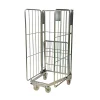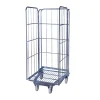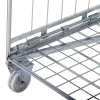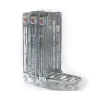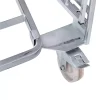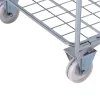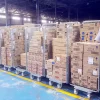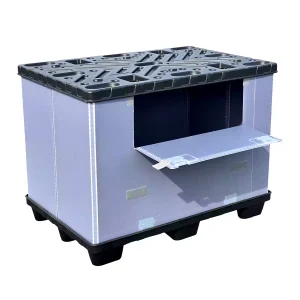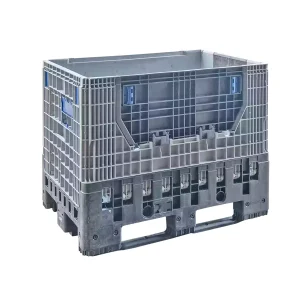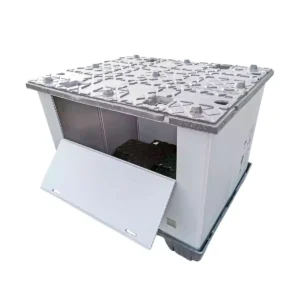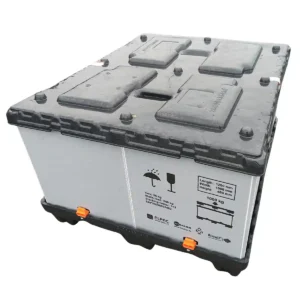Roll cages, also known as roll containers or roll pallets, are mobile units typically used for transporting and storing goods within warehouses, distribution centers, retail outlets, and postal facilities.
CONSTRUCTION
The sides
The side-walls are usually made of steel mesh wire, which allows for visibility and ventilation of the contents. A smaller mesh can also help to keep the contents secure.
Base and Nestable Design
The base is made from steel. The base has a mesh/grid pattern to reduce weight while maintaining strength. The design of the base is made fort hem to fit into each other (nestable).
VARIATIONS
2-Sided Roll Cages
Suitable for larger items that are less likely to fall out.
3-Sided Roll Cages
Provides more security while still allowing easy access.
4-Sided Roll Cages
Fully enclosed with four mesh or wire sides and sometimes a top. Used for securing smaller or more valuable items.
Nestable Roll Cages
Designed to nest inside each other when empty, saving space during storage and transport.
Demountable Roll Cages
Can be disassembled when not in use, providing storage space efficiency.
Shelving
- fixed or foldable depending on the design.
Security features
-reinforced locks,
-tamper-evident seals
-electronic tracking.
Ergonomic Features
- additional handles
- anti-slip bases
- shock-absorbing wheels.
INDUSTRIES USING ROLL CAGES
Retail
Transporting products from storage areas to the sales floor, restocking shelves, and managing returns.
Warehousing and Distribution
Order picking, transporting goods within the warehouse, and preparing items for shipping.
Grocery and Supermarkets
Moving fresh produce, dairy, and other products from storage to display areas.
Healthcare
Transporting medical supplies, pharmaceuticals, and equipment within hospitals and healthcare facilities.
Manufacturing
Moving raw materials, components, and finished goods within the production area and to storage.
Hospitality and Catering
Automotive
Textile and Apparel
Logistics and Transportation
Food and Beverage








